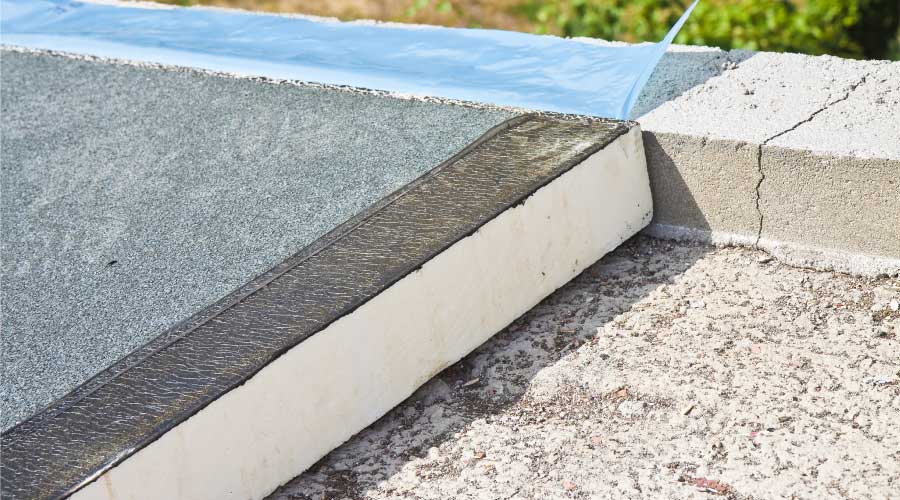What the New SEC Climate Regulations Mean for Facility Managers
Here are three steps facility managers should take now in advance of new reporting rules.
By Dwight Abshire and Laura Abram, Contributing Writers
Since the SEC’s new Climate Disclosure rule was announced in early March, the debate about the value of emissions reporting – and exactly how it should be done – has intensified significantly. But regardless of the rule's future, it’s clear that both publicly traded and privately held companies must start taking action to improve the efficiency of one of the largest consumers of energy and one of the largest sources of greenhouse gas (GHG) emissions: buildings. According to the NREL, buildings in the United States account for about 30 percent of operational GHG emissions (EIA 2021; EPA 2021).
The SEC rule puts the built environment squarely in its crosshairs by asking companies to formally report their Scope 1 and Scope 2 GHG emissions and even describe how management is assessing and managing climate risks. Ironically, there is no simple checklist for you to achieve compliance or roadmap to common sense, cost-effective, planet positive actions that will make commercial buildings carbon neutral in the next two to four years. However, every company can start getting its house in order right now, if it truly wants to make strides towards improving the health of the built environment, and consequently, the planet.
Understand the Bigger Picture
It can be all too easy to focus on how climate-focused legislation or related actions can impact profitability. But all successful businesses have a purpose beyond profit, whether increasing convenience, ease or comfort. Within the built environment, improving human health, wellness and safety is essential, especially considering Americans spend 90 percent of their time indoors on average. With that frame of reference, it's easier to see the true purpose behind the new SEC rule and see it on a spectrum compared to the much stricter regulations in California and in Europe, such as California SB 253 and SB 261.
Global companies who have already been working their way through those stricter regulations are well-positioned for stricter emissions reporting standards in the U.S. Most have realized that they will continue to be profitable because of, not in spite of, sustainability. Knowing investors are becoming savvier, companies have put the resources into establishing sound reporting frameworks that can help answer questions about the importance of the health and efficiency of their buildings on their bottom lines. The real estate industry has made massive strides in this space in the last few years, and now the insurance industry is putting more emphasis into the potential impacts of climate-related events – something that the SEC disclosures also key in on – making climate-related data more valuable than ever. In fact, several prominent insurers have pulled back policies in the state of Florida due to climate concerns. With all these trends in play, it's a business imperative that building emissions data is accurate and up to date.
Go Beyond the Dollars
Public or private, no company will be able to withstand the new wave of climate regulations without being able to answer the question, “What’s is the footprint of your space?” You must institute a process to translate the actual consumption data of the bills in a meaningful way and be very specific about the data they report.
Fortunately, there are several systems already available to help, which can enable integration of carbon accounting and reporting into larger workflows. Other available systems are geared towards management, analysis and reporting of ESG data. Regardless of what systems you use, and what emissions measurements are needed, it’s important to ensure clarity in public statements about what is and is not being reported, and then develop a plan for future reports that will be more comprehensive.
Businesses should use the time between now and the climate disclosure rules taking effect to add clarity to their building emissions measurements and identify what resources are needed for long-term improvement. Rebates and incentives are widely available to help you offset the costs of making these improvements. Energy efficiency and building service partners who can provide guidance on rebates and create a blueprint for sustained improvement can be valuable for facilities teams who will be required to show improvements in response to new regulations. Without the consumption data to support those plans, something as simple as an LED retrofit project or a heat pump repair can end up exceeding the load capacity of the grid and costing you money.
Be a Model of Responsibility
Any new regulations are likely to create a period of change or confusion. Don’t let that disrupt the integrity of your efforts as you prepare for new regulations. If you are truly invested in creating a healthier built environment, prepare for and support climate reporting initiatives as though you will be held accountable, knowing that responsibility precedes compliance.
Once you’ve established that expectation of responsibility within your own company, set it with your vendors and partners and help them act in a way where they see the importance of ethical reporting.
Emissions from the built environment will continue to be a popular topic as these regulations evolve, but they aren't the only aspect of your sustainability journey. Most successful publicly traded companies will agree that their sustainability goals rely on more than just emissions profiles of the companies that support their buildings, but they are a critical component. Good corporate citizenship, safety and the health and well-being of your employees all factor into the equation. And while it’s important to address all the issues and raise the tides, the only way to do that successfully is to have a purpose to make positive change and a plan to act methodically to improve the health of our environment.
Dwight Abshire is Vice President of Sustainability for Crete United and Laura Abram is Principal for Emerald Renewable Energy Consulting.
Related Topics:












